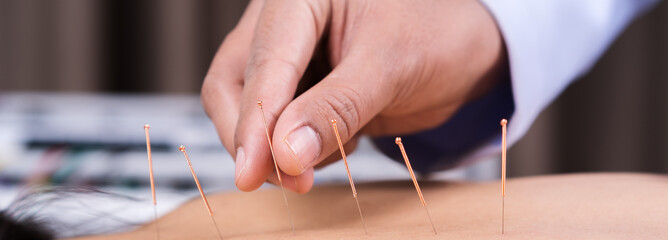Helping you choose the right option between dry needling or acupuncture
Although appearing very similar, there is actually a vast difference between traditional Chinese Acupuncture and Westernised Dry Needling. They may use a similar needle, however the similarities stop there.
Dry Needling gets its name as no fluid is being inserted or removed and is based more on Western Medicine. It specifically targets musculoskeletal and myofascial pain through the insertion of needles into tight bands of muscle or trigger points. When the needle is inserted into the trigger point, a local inflammatory response occurs, causing oxygenated blood to flow to the area which promotes tissue healing. The needle is then moved in and out of the muscle to disrupt the abnormal neuromuscular activity that is causing pain. This causes the muscle/trigger point to relax and or ‘release’, which will restore its normal muscle function by reducing pain and normalising movement.
Dry Needling is used for a variety of reasons. These include
- improving muscle function
- reducing pain
- increasing blood flow to an area (providing nutrients and removing waste)
- speeding up recovery
- releasing tightness in muscles
- to stimulate a local twitch response in a muscle (allowing it to relax)
Traditional acupuncture is based on the idea of restoring the proper flow of energy (or qi) around the body. It is when this imbalance is restored, that the patients symptoms and/or pain can be reduced.
The needles are inserted into points along meridian lines in the body, which according to Chinese medicine are the energy pathways within the body. The needles are left in for anywhere between 15-30 minutes and can be used to improve chronic pain, headaches, digestive issues, insomnia, stress and much more. The placement of needles will coincide with the patients symptoms.
So which is better, Dry Needling or acupuncture?
While offering a more holistic method of treatment, the scientific evidence is lacking to suggest traditional acupuncture as an effective method of reducing pain and or/tightness. The evidence if a lot more favourable for dry needling and can be used to treat a variety of musculoskeletal conditions.
Dry needling can treat:
- neck and shoulder pain
- lower back pain
- headaches
- tennis and golfers elbow
- shoulder injuries
- calf injuries
- general stiffness from arthritis/general wear and tear
- nerve entrapment including sciatica.
Dry Needling is most effective when used in conjunction with other treatment techniques from your physiotherapist including soft tissue massage, joint mobilisations, manipulations, and exercise prescription.
So if pain, whether acute or chronic, whether musculoskeletal or nerve is a symptom of yours, you may benefit from greatly from Dry Needling.
At Swan Physiotherapy, all of our practitioners are trained in dry needling. If you'd like to include this as part of your treatment plan, mention this to your physio and we will discuss whether this is appropriate for you. We may also suggest it if we believe it will help you get back to your best.
Contact us to book your session today.

